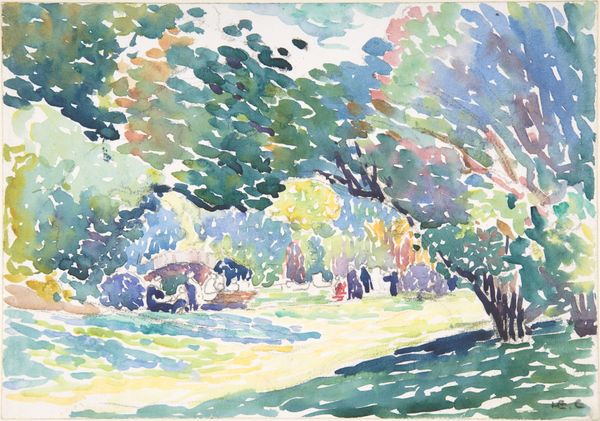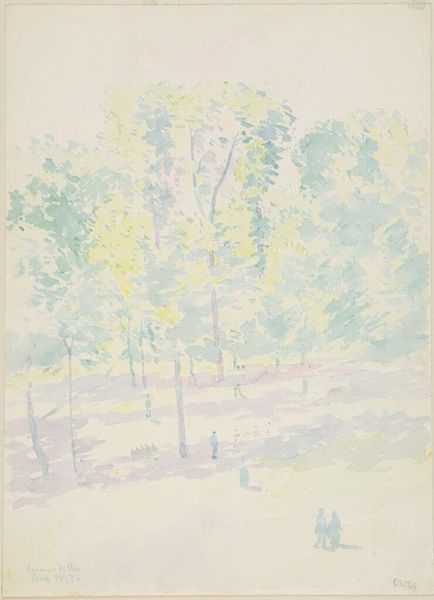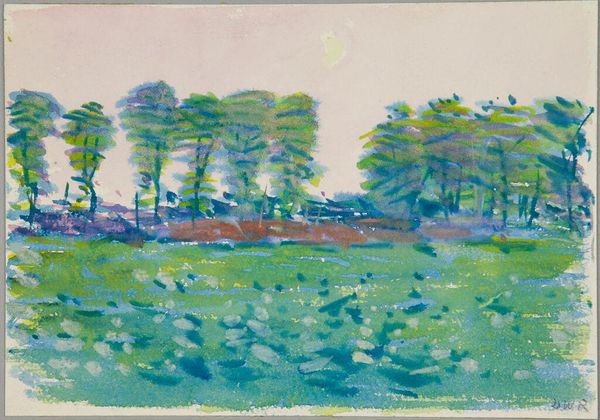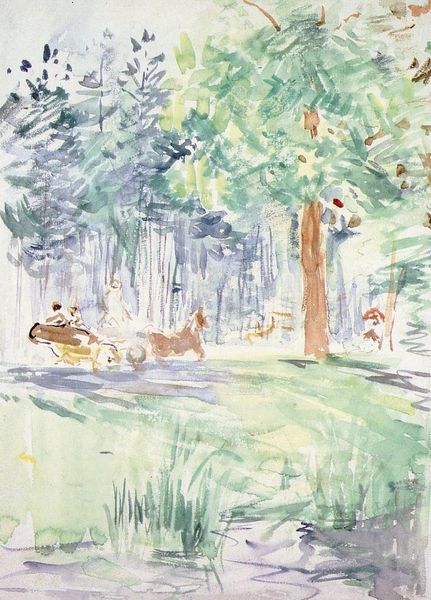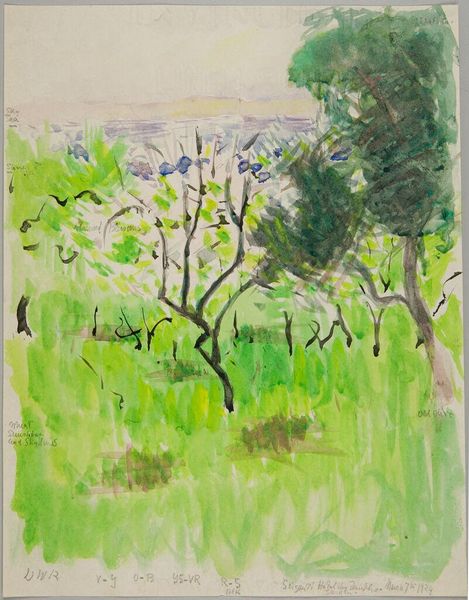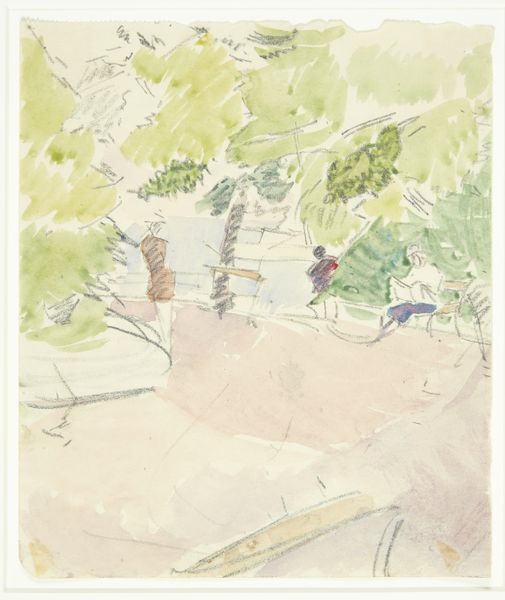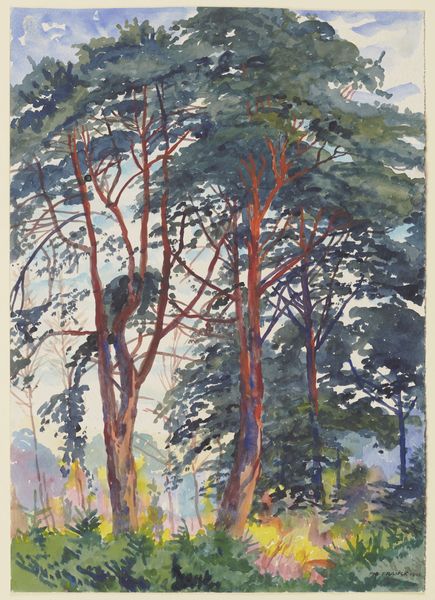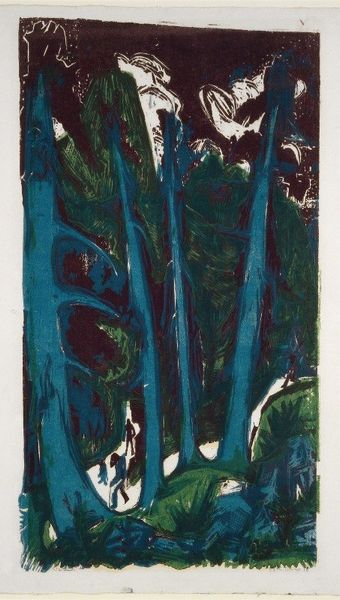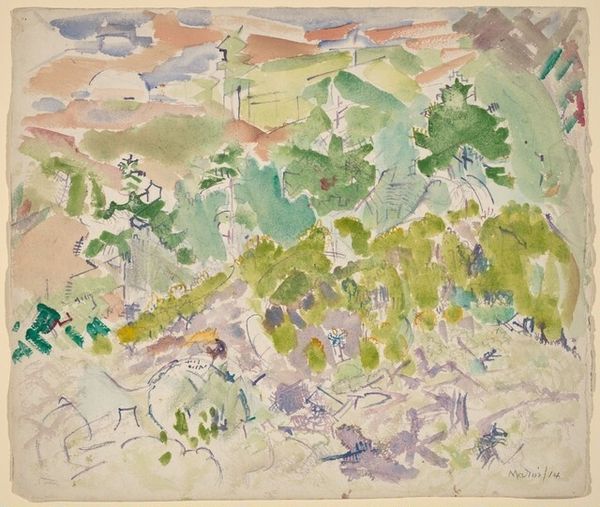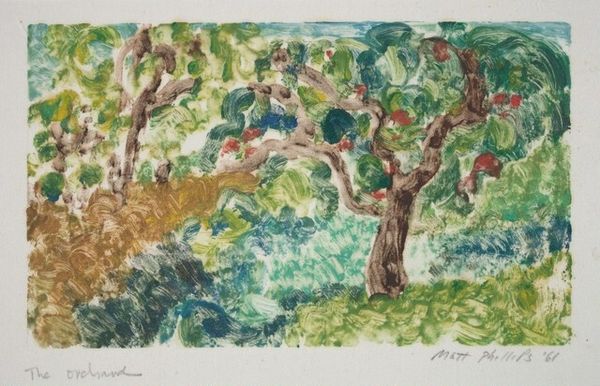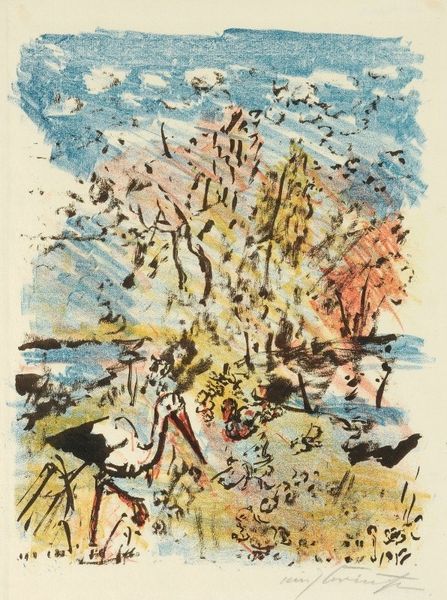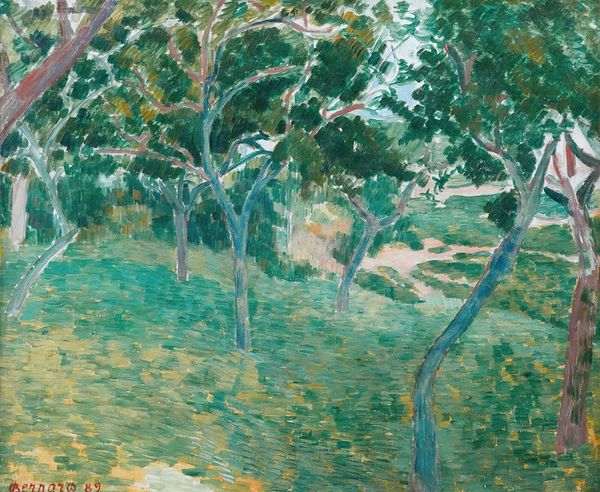
Dimensions: 8 5/16 x 6 11/16 in. (21.11 x 16.99 cm) (sheet)18 5/8 x 15 3/16 in. (47.31 x 38.58 cm) (outer frame)
Copyright: No Copyright - United States
Editor: Here we have Childe Hassam's "In the Park," a watercolor painted in 1910. The breezy strokes of green and blue give such a light and airy feel. What captures your attention when you look at this? Curator: Well, for me, it's the deliberate use of watercolor as a medium itself. It challenges traditional oil painting by highlighting the transparency and fluidity of the urban experience. Editor: Fluidity in what sense? Curator: Think about it: mass production, new building techniques, and leisure time rapidly changed the social fabric of America in 1910. Watercolor allowed for quick impressions en plein air, making it ideal for capturing this sense of impermanence, like a fleeting moment observed. It also democratized art-making, being a relatively affordable and accessible material. Editor: So, the medium becomes a comment on the changing world? Curator: Exactly. Hassam wasn't just painting pretty landscapes; he was participating in a broader conversation about what art could be and how it could be made, challenging academic norms through his chosen medium and the techniques he employed with it. Look how the paint handling evokes speed! What do you make of the figure studies? Editor: They seem deliberately indistinct, more like patches of color contributing to the overall impression of a bustling park than individual portraits. Curator: Precisely. This reinforces the idea of the individual subsumed by the modern urban environment, mass society made possible by material progress. Are there any other ways that his labor, materiality, or consumption stand out? Editor: Now that I’m thinking about it, you see similar scenes frequently depicted using oil painting at the time, but something like this has more of an “on-the-go” aesthetic. The way it’s executed, it mirrors the life it attempts to reflect. Curator: That's insightful. Considering art through the lens of its production and material choices opens up so many interesting perspectives.
Comments
minneapolisinstituteofart almost 2 years ago
⋮
In 1910, Hassam and his wife Kathleen Doan traveled to Paris. This scene could have been set in one of the urban gardens there – or in his home city of New York City. He loathed the way that rapid urban development blotted out the green space around his Manhattan studio. In some works, he edited out or minimized the skyscrapers at the edge of city parks. Made after he committed himself to wellness following a period of depression and heavy drinking, the scene may express the renewed feeling he had for life and the outdoors.
Join the conversation
Join millions of artists and users on Artera today and experience the ultimate creative platform.

